
Product handling
packaging
The BOTTOM LINE
Equipment to meet needs of producers and consumers
Robotics adding flexibility and simplicity
Flexible ways to fill orders
The latest product handling equipment—cartoners, case erectors and packers, loaders and palletizers—are designed to meet the needs of bakery and snack producers as well as consumers in a fast-changing marketplace. These flexible systems can run a large array of SKUs and they feature quick-change capabilities.
Handle with care
Secondary packaging equipment meets the needs of a fast-changing marketplace.
Neal Lorenzi, Contributing Writer
As the consumer experience becomes more complex, bakery and snack producers are reimagining secondary packaging beyond the plain corrugated box, according to a recently released “Secondary Packaging Trends” white paper from PMMI, Herndon, VA. “The consumer packaged goods industry has recognized the need to evolve new methods and strategies for secondary packaging to compete in a more dynamic market space,” says Sean Riley, senior director, media and industry communications.
New packaging equipment is able to create more complicated carton types and innovative, shelf-ready displays. The incorporation of servo technology is driving the ability to construct more complicated types of cartons. “Bliss-style cases can be fed with robotic loaders, making corrugate handling easier. Also, a new generation of robotic case erectors allows for the erection of multiple size RSC (regular slotted container)-style cases,” says Dean Elkins, segment leader, handling, Yaskawa Motoman, Miamisburg, OH.
New case erectors can erect and seal display cases, which are transported to a place packer or robotic packer for product packing, according to Bryan Sinicrope, vice president marketing and integrator sales, A-B-C Packaging Machine Corp., Tarpon Springs, FL “This allows manufacturers to package in regular and display cases to serve different market segments. A-B-C’s solution is applicable to a range of bakery and snack products, including bags and cartons.”
Courtesy of A-B-C Packaging
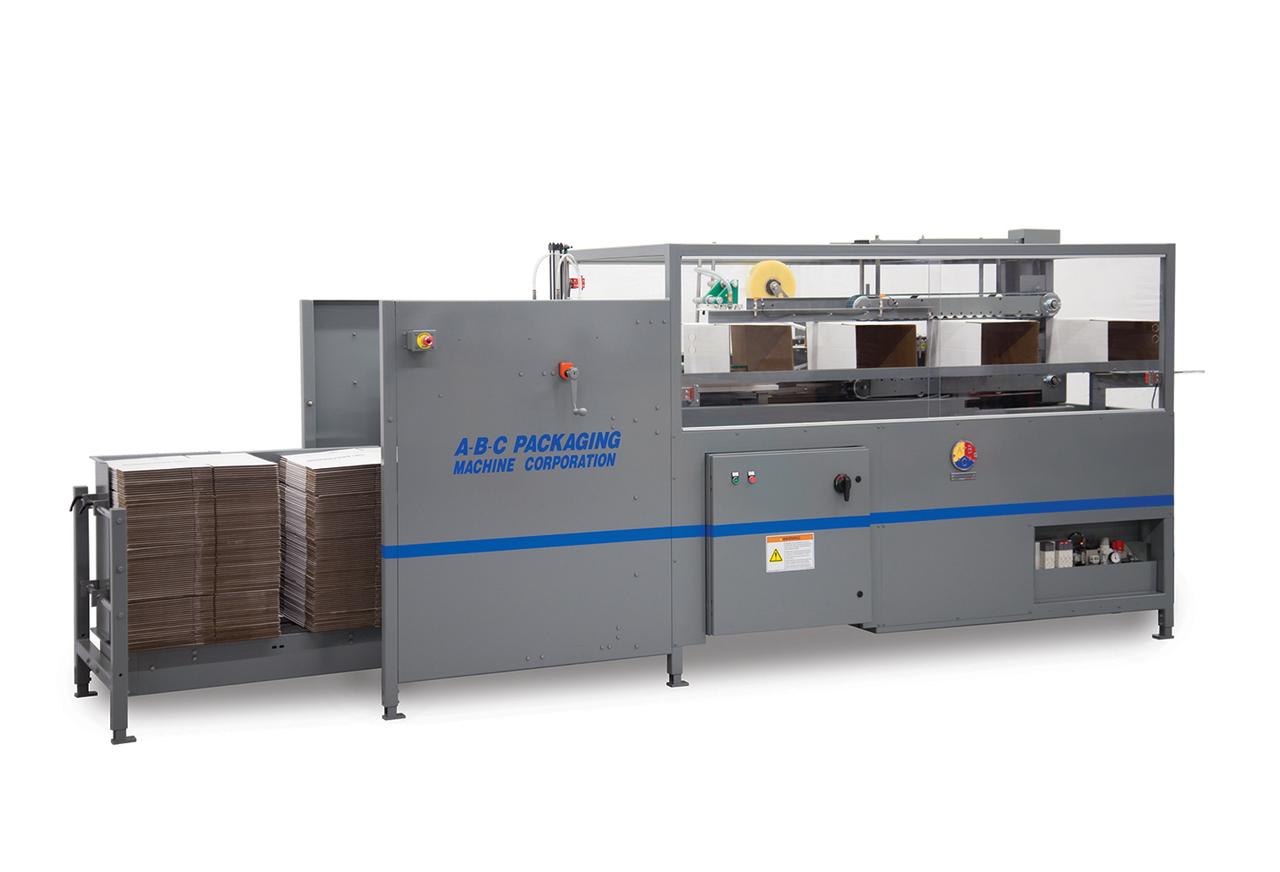
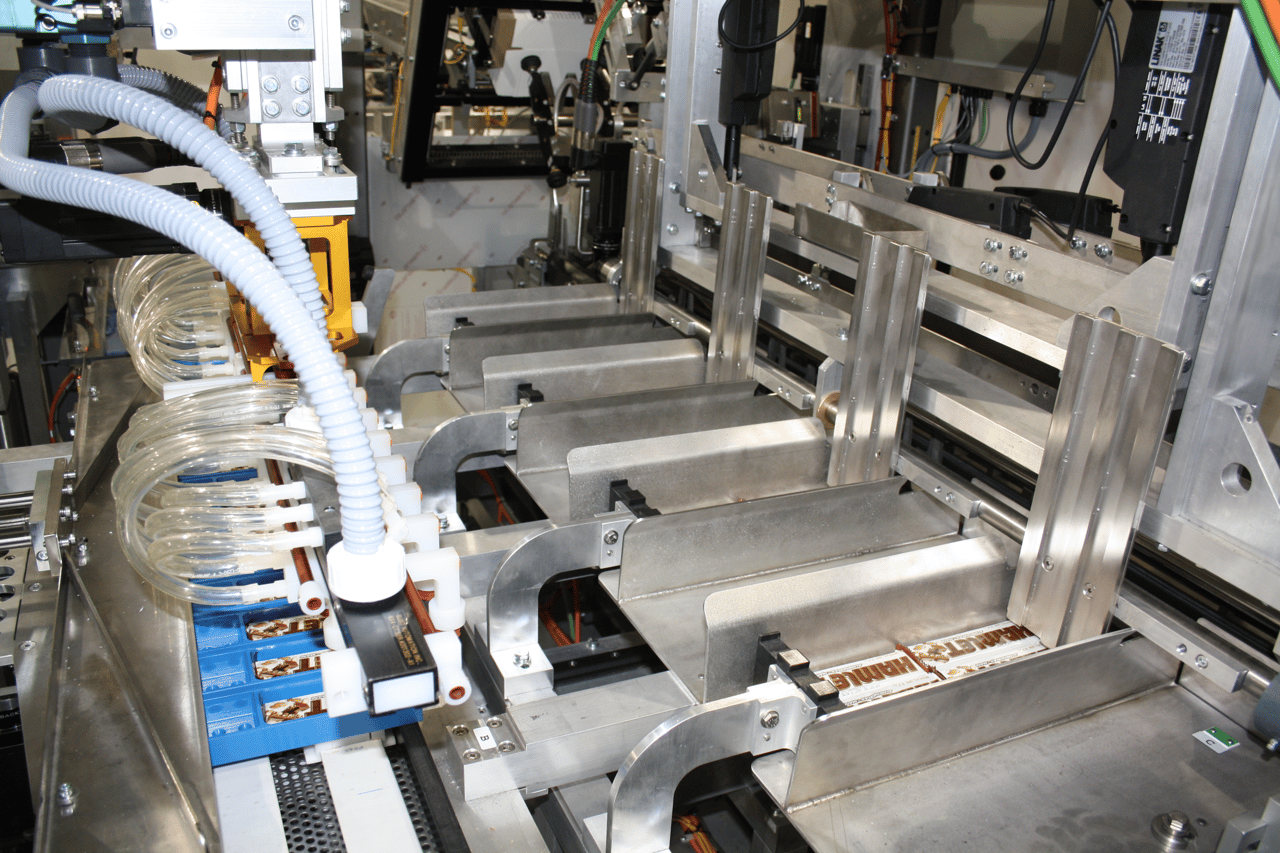
AFA Systems Ltd., Brampton, Ontario, recently designed a case packer that can run RSC and HSC (half slotted container) cases on the same machine. The company also completed a shelf-ready display case packer for a snack food company. “The customer required a robust system with a small footprint to run their packages at over 100 ppm. The system also had to run a wide range of sizes. Fortunately, the continued development of robot technology, such as Delta 3 and two-axis robots, has made these requirements easier to handle from an engineering design perspective,” says Eric Langen, vice president of sales and marketing.
Courtesy of AFA Systems
Courtesy of SOMIC America
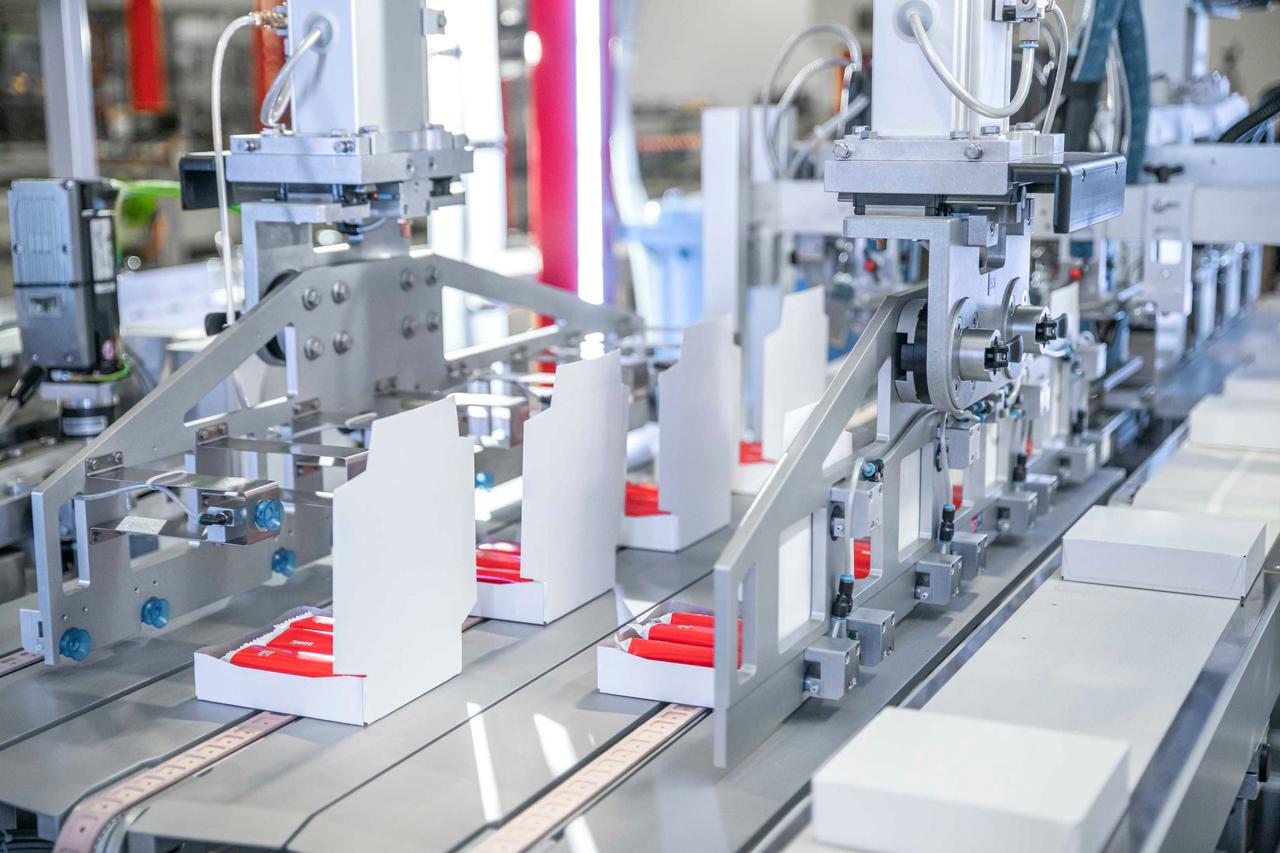
Many new, sophisticated carton designs help differentiate today’s bakery and snack items. When packaging products in these cartons, though, it is important to form and close the cartons around the product, according Peter Fox, senior vice president of sales for SOMIC America Inc., Wytheville, VA.
“SOMIC accomplishes the formation and closing of complex cartons by capturing the product in a metal forming cassette. The blanks are formed around the cassette, which is followed by closing the carton. This process gives the producer more freedom in designing complex designs while eliminating worries about damaged products,” Fox says.
Courtesy of BluePrint Automation
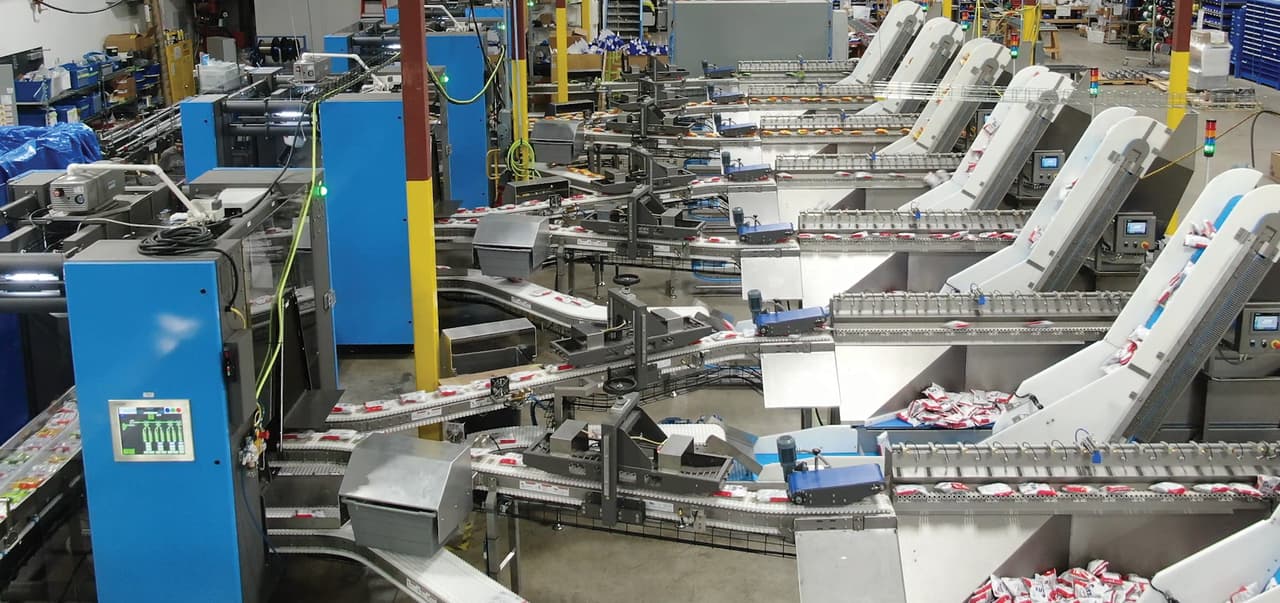
Robotic systems
Robotics is a big part of these product handling systems because it adds flexibility and simplicity to the process. The current labor-shortage has made the use of robotics especially advantageous, according to Joel Wiskochil, sales manager, BluePrint Automation, South Chesterfield, VA. “Typically, a robotic system has a small footprint, can be high-speed, is very accurate, is safe to operate and is historically reliable. It also can work three shifts. Coupled with a vision system, it can pick and place un-oriented products from a belt and place them in many containers.”
Fox says the biggest advances are occurring with companies that develop their own robotic systems based on the specific needs of their cartoners and case packers. “With application-specific motion, the number of axis and movements are defined and built into the motion. With pre-packaged robotic arms, the OEM is actually building their system to accommodate the arm.”
Syntegon Packaging Technology, New Richmond, WI, has introduced a robotic pick-and-place platform that facilitates product handling, feeding and loading. Designed as a modular system, it allows individual configuration of the robotic cells. Delta robots can be flexibly connected and, together with transport modules, seamlessly integrated into a system. “Together with our customers, we can automate single process steps consecutively and in line with their needs or budgets, following the principle 'build as you grow.' Moreover, the platform can be scaled to suit different production capacities, while multiple cells can be connected,” says Janet Darnley, product manager.
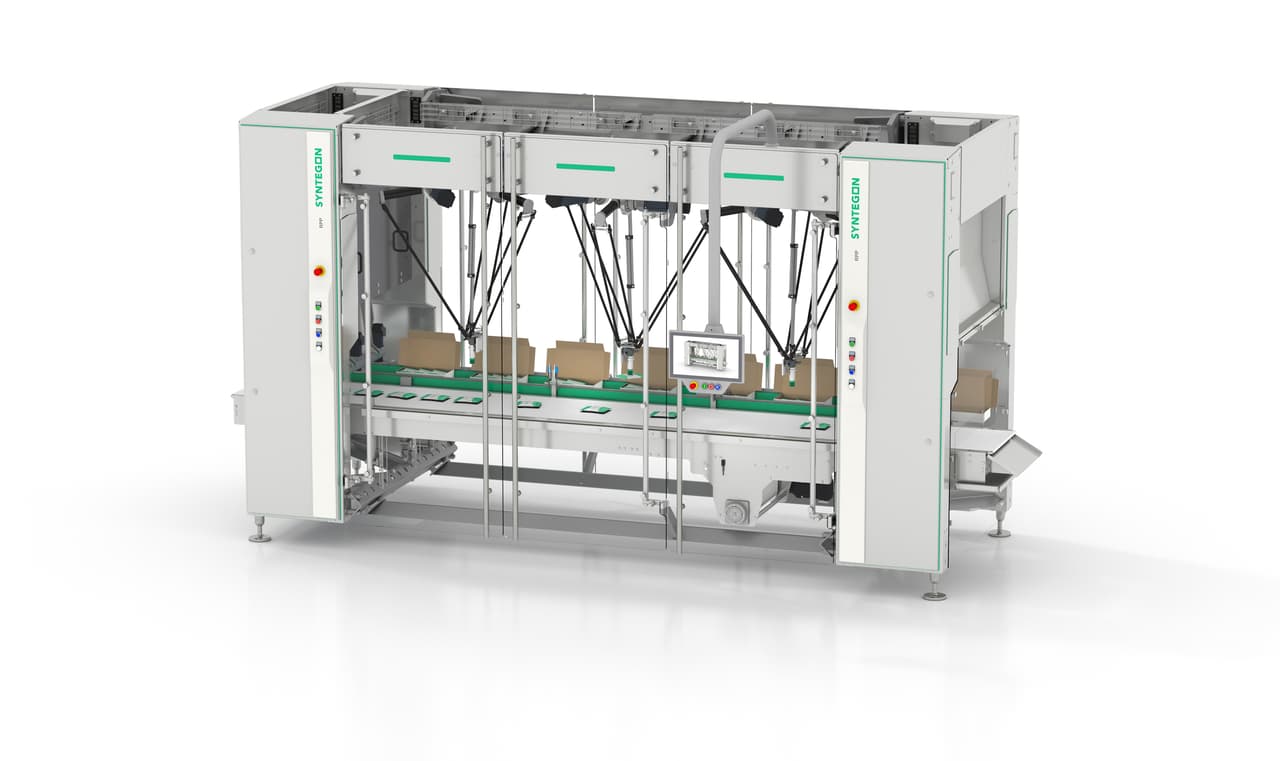
Courtesy of Syntegon
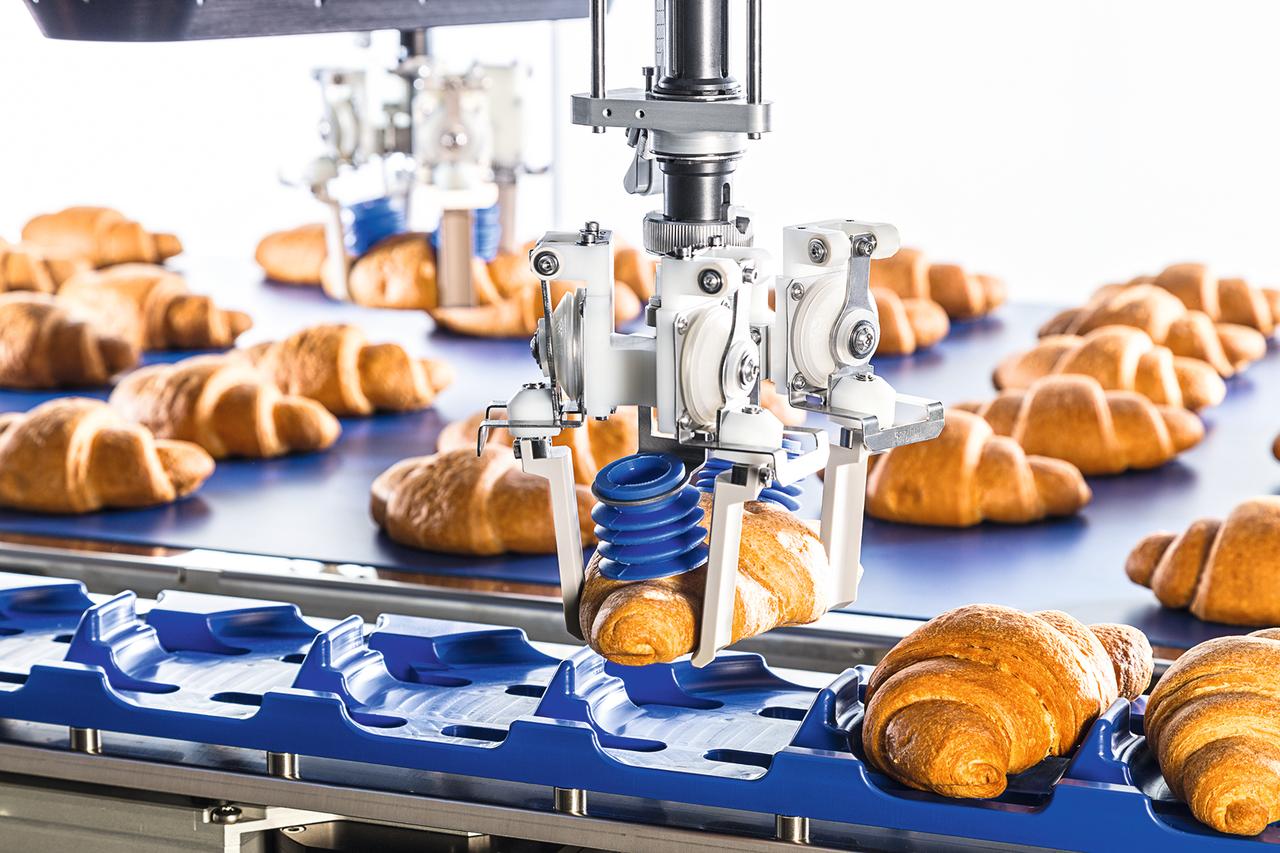
Syntegon’s stainless steel robotic cells meet the IP65 protection class, which minimizes the risk of contamination for current and future hygiene requirements in the food industry. Also, tool-free changeover reduces downtime, allowing manufacturers to process different products on the same line and to respond quickly to changing market demands, Darnley adds.
Schubert North America LLC, Charlotte, NC, offers pick & place robots featuring quick-change tools that process highly sensitive products. The machines can easily switch between plastic and cardboard trays. An almost unlimited number of formats with and without trays can be implemented and variable image processing monitors product quality in 3D.
Courtesy of Schubert North America
Schubert North America recently introduced the T5 robot, which has a fifth axis that can pivot and tilt products. This is ideal for pastries that need to be placed vertically into a tray. “The additional arm movement opens up greater flexibility in the packaging process as well as the possibility of making difficult sequences more efficient and reliable. This guarantees product quality even in the case of more complex machine processes,” says Hartmut Sigel, chief executive officer.
AFA Systems has introduced the TP-RCP-TransPacktor Robotic Case Packer for use with tubs, canisters and bottles. Instead of the traditional way of case loading through gravity dropping or pick and place, the TransPacktor can erect the case and place it over the collated array of bottles. “The change-over process is simplified because change parts are not required. This style of case packing also uses a small footprint because a separate case erector is not required,” Langen says.
More innovations
BluePrint Automation offers an array of secondary case packing systems as well as high-speed, vision-guided robotics. The company recently introduced Multi-Flavor Variety Pack Systems for the salty snack industry. “The systems sort products and convey them to vision-guided robots,” Wiskochil explains.
“The robots then place products directly into cartons or into flights, all while keeping an accurate count of various flavors. If products are placed in cartons, the cartons are closed and then packed into cases. If products are placed in flights, they are collated and pushed into bags and then packed into cases. We have supplied systems with flavor quantities ranging from two to eight in one master package.”
Courtesy of Yaskawa Motoman
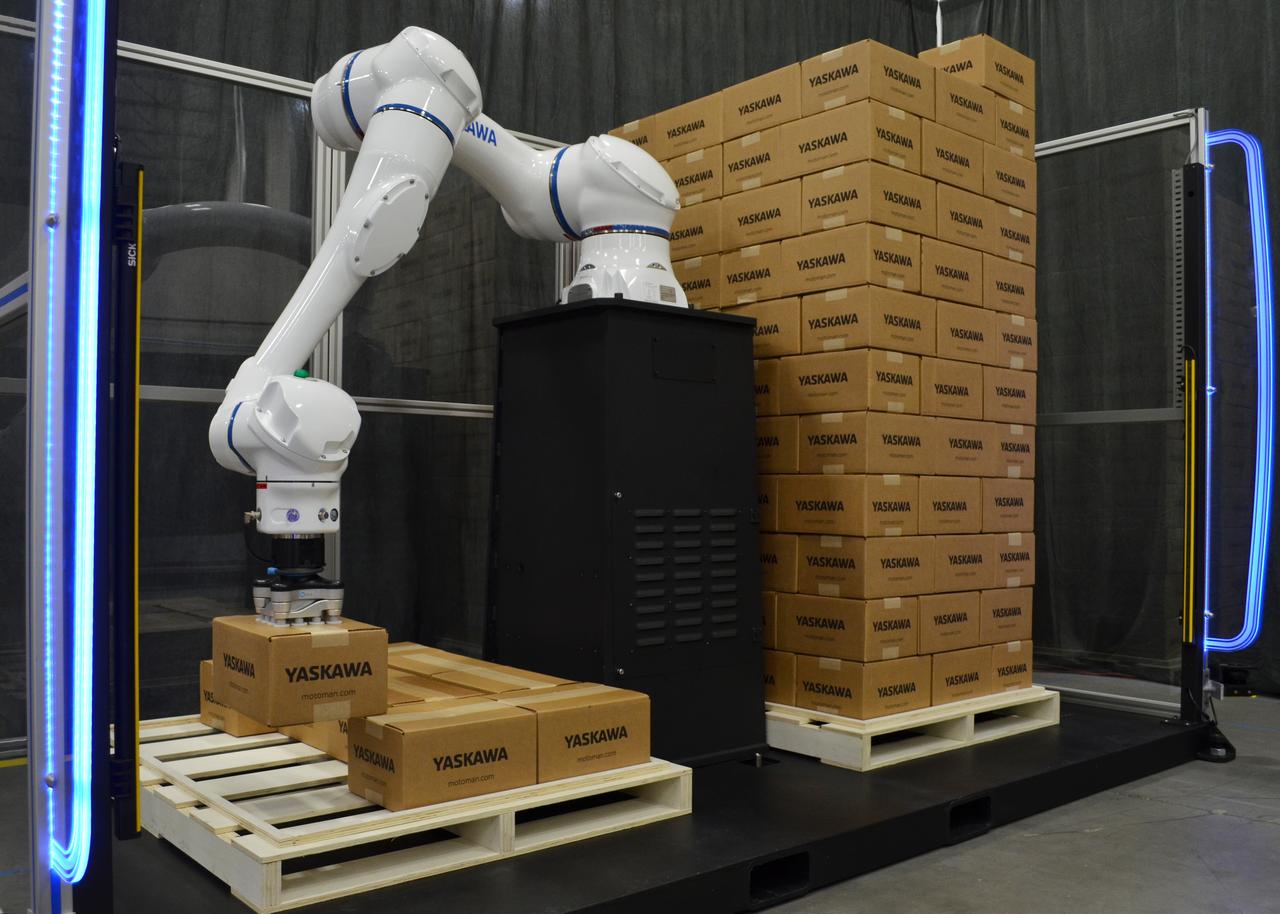
Equipped with food-grade grease and an IP67 rating, Yaskawa Motoman’s HC-series collaborative robots are easily deployed in case packing and palletizing applications. Flexible and easy to use, they are available with a 10- or 20-kg payload capacity, and 1,200- or 1,700-mm reach respectively.
A-B-C Packaging Machine Corp. has introduced the 72AN Compact Low Level Palletizer, which is ideal for bakery and snack plants that have limited floor space or a small budget, according to Sinicrope. “The machine occupies from 10 percent to 30 percent less floor space than conventional low-level palletizers, depending on the accessories required, and offers flexibility for product feed and pallet configuration.”

